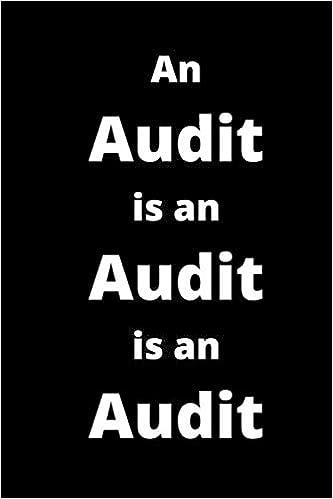1. Which of the following items is a "period" cost? a. Cost of merchandise purchased for resale. b. Transportation-In cost on merchandise purchased from suppliers. c. Transportation-Out cost on sold goods delivered to customers. d. All of the above choices represent "product" costs. 2. Matney & Dominguez, Inc. purchased $800 of inventory on account with payment terms 1/10, net 45". Assuming the company uses the perpetual inventory method, and the goods were purchased under "FOB Destination freight terms, which of the following journal entries is required at the time of purchase? a. Debit inventory credit cash b. Debit accounts payable credit inventory c. Debit cash / credit accounts payable d. Debit inventory/credit accounts payable e. Any of the above journal entries would support this fact pattern 3. Which of the following statements is true? a. All costs associated with inventory should be expensed when the inventory is purchased. b. "Transportation-Out" is a product cost for the seller. c. Product costs are always initially recorded as assets. d. Advertising expense is an example of a product cost. e. All of the above represent true statements. 4. Peterson & Hartschuh (PH), Inc. sold merchandise on account. The terms of sale were FOB "Shipping Point". Shipping costs totaled $199. Which of the following illustrates how this event would affect PH company's (not the customer's) financial statements? (NE-No effect) Assets - Liab. + Equity Rev. - Exp. = Net Cash Flow Ine. NE NE NE NE NE NE NE NE NE NE NE + NE NE NE - OA + FA NE NE NE Gruber & Moore, Inc. properly recorded the purchase of $5,000 of inventory with terms 2/10, n/30 on June Ist. The company paid cash for the goods on June 7 and earned the offered discount. How would the company record the June 7 cash payment in their accounting records assuming use of the perpetual inventory method? a. Debit accounts payable for $5,000, credit cash for $4.900 and credit inventory S100. b. Credit accounts payable for $5,000 and debit cash for $5,000. c. Debit accounts payable for $5,000, credit cash for $4,950 and credit inventory S50. d. Credit accounts payable for $4.950 and debit cash for $4.950. c. Debit accounts payable for S4,900, credit cash for 55.000 and debit inventory S100 6. What would be the annualized interest rate earned under purchase terms "1/10, net 60" (assuming a 360-day year)? In other words, what is the maximum annualized interest rate a company could borrow at and still be equal to or better off by taking the discount? Show your work. 7. Betts & Bogart, Inc. sold inventory for $78,000 cash that had cost them $58,000 Assuming the company uses the perpetual inventory method, the net effect of all journal entries required to properly record this sale would: a. decrease assets by $20,000. b. decrease net income by $20,000. c. increase retained earnings by S20,000. d. increase expenses by $20,000. 8. If land is sold for more than the company paid for it, the resulting "gain on sale" would: a. Decrease Equity b. Increase Liabilities c. Increase Assets d. None of the above would occur. 9. Ingol & Worst, Inc. purchased inventory on account from a supplier. The goods purchased totaled $1,221 and freight costs amounted to $57. The terms of the sale included reference to "FOB Destination". How would the freight charges be recorded in the buyer's accounting records assuming use of the perpetual inventory method? a. Debit Transportation-In, credit accounts payable b. Debit Transportation-out, credit accounts payable c. Debit inventory and credit cash d. No Freight charges would be recorded by the buyer. 10. Zeigler, Inc. reported the following information for the month of May: Sales $ 98,000 Beg. Inventory (May 1) 55.000 Ending Inventory 6,000 Cost of Goods Sold 55.000 Based on the information provided, what was the company's gross margin and what was the total amount of merchandise purchased during May? Consider T-acct analysis Gross Margin Purchases $44,000 $52,000 $43,000 S54,000 $44,000 $56,000 $43,000 $56,000 $44,000 S53,000 11. The following inventory information was taken from the records of Falcon, Inc.: Cost Market Value Item Quantity per Unit per Unit B 50 SIZ S9 G4017 20 S 10 10 The company reports inventory at the lower of cost or market (applied individually). After your analysis, and pg 282 review, the necessary adjusting entry would: a. reduce assets and equity by S200, b. increase assets and equity by $180. c. reduce assets and increase liabilities by S400. d. increase assets and equity by $1,100








